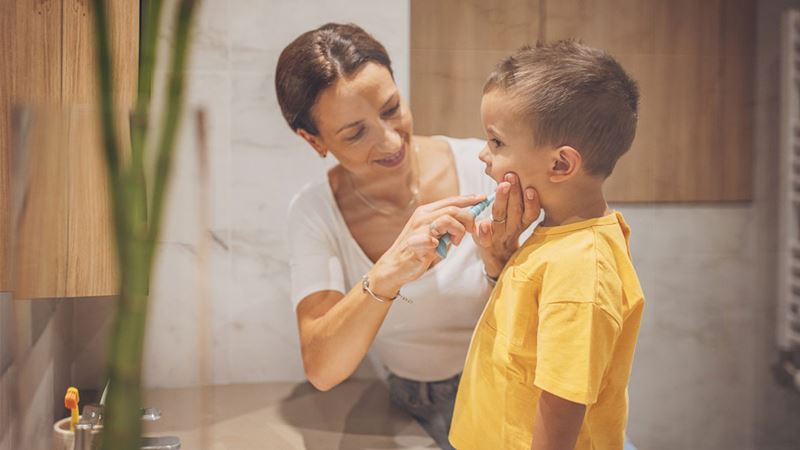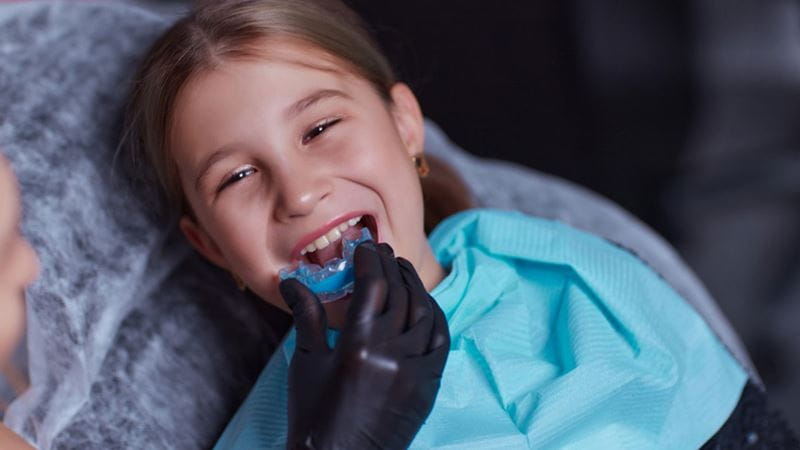Blog article
How to properly brush and floss your teeth

We spoke with EGM – Clinical Excellence, HBF Dental, Dr Troy McGowan who provided detailed instructions on how to brush and floss effectively for optimal oral health.
Why brushing and flossing matters
Before we get stuck into cleaning techniques, let’s understand why brushing and flossing are so important.
Tooth decay, the culprit behind cavities, is caused by plaque, a sticky bacterial film which coats teeth and turns the sugars and carbohydrates in food to acid which dissolves your tooth structure. The manifestation of tooth decay becomes evident when a cavity, or hole, develops in your tooth1. Brushing helps to remove plaque from the main surfaces of teeth, keeping them clean.
Flossing, on the other hand, reaches the tight spaces between teeth and along the gumline, where toothbrushes can't reach, removing food particles and plaque build-up.
While enamel is the hardest substance in the body, it is a non-shedding surface (unlike skin) which means that the only way to remove bacterial plaque off is mechanically with your toothbrush and floss. Think of the soap scum on your shower door – not matter how much bleach you apply, it still needs to be scrubbed!
How to properly brush your teeth
The proper brushing technique begins with selecting the right toothbrush. “Electric oscillating head toothbrushes have been shown by research to clean the most effectively and efficiently. It doesn’t mean that you can’t clean well enough with a manual toothbrush, but you are far more likely to clean well using an electric oscillating head brush. If you prefer a manual brush, opt for a soft-bristled toothbrush with a small head that can easily reach all areas of your mouth,” recommends Dr Troy.
“Brush your teeth at least twice a day, ideally 30 minutes after meals and before bedtime, for a minimum of two minutes each time.”
Dr Troy recommends the following brushing technique for manual or sonic toothbrushes:
- Hold your toothbrush at a 45-degree angle to the gums.
- Use gentle, circular motions to clean the front, back, and chewing surfaces of all teeth.
- Pay special attention to the gumline, where plaque tends to accumulate.
- Don't forget to brush your tongue to remove bacteria and freshen breath.
If you are using an electric toothbrush, it does all the work for you, so:
- Place the brush gently on the front of the tooth and rotate gently from front to back for three seconds.
- Move to the next tooth and repeat.
- Follow the same technique for the back and tops of the teeth.
Remember to avoid aggressive brushing, as it can damage tooth enamel and irritate gums2. Holding your toothbrush between your thumb and index finger while brushing provides just the right amount of force needed after cleaning.
Finally, when you are done run your tongue around your teeth to feel if they are smooth. If you feel a rough spot go back with your brush and clean it some more.
How to properly floss your teeth
When it comes to choosing the right dental floss, there’s no wrong answer says Dr Troy, “Select whatever dental floss is comfortable for you to use, whether it's waxed or unwaxed, flavoured or unflavoured, tape or string.”
Dr Troy recommends the following flossing technique:
- Cut off a piece of floss about 30cm long.
- Hold the floss between your thumbs and index fingers, leaving about 3-5cm of floss to work with.
- Gently guide the floss between your teeth using a back-and-forth motion, curving it around each tooth in a C shape. Remember you are trying to scrape off the plaque that is stuck to the sides of the teeth.
- Reach below the gumline but avoid snapping the floss or pushing it down too hard as it may injure your gums.
Remember to take your time and ensure you clean between every tooth. If you notice any bleeding when you brush or floss it can be a sign that you either aren’t brushing or flossing enough to keep your gums and teeth healthy, or that you might have gum disease. If you notice bleeding during or after cleaning, try increasing your brushing/flossing frequency and duration. If within two weeks, the bleeding hasn’t stopped, book in to see a dental professional and have your gums checked.
What else can I do to keep my teeth and gums healthy?
Rinse with mouthwash: Use an antibacterial mouthwash to help kill bacteria, reduce plaque regrowth and freshen breath.
Visit your dental professional regularly: Schedule dental check-ups and cleanings every six months to maintain oral health and address any concerns promptly.
Maintain a balanced diet: Limit sugary and acidic foods and drinks, as they can contribute to tooth decay.
Consider using interdental brushes: If you’re not a fan of traditional flossing, have dexterity issues or orthodontic appliances, interdental brushes can be a great alternative.
By incorporating proper brushing and flossing techniques into your daily routine, you can significantly improve your oral health and reduce the risk of dental problems.
“Remember to brush at least twice a day, floss daily, and visit your dental professional regularly for expert attention,” says Dr Troy.
How can I cover the cost of dental?
With 100% back on your first scale and clean each year* and no annual limit for preventative dental on select covers, HBF extras cover helps keep you smiling.



